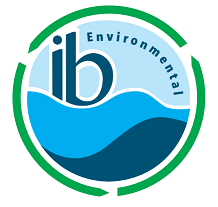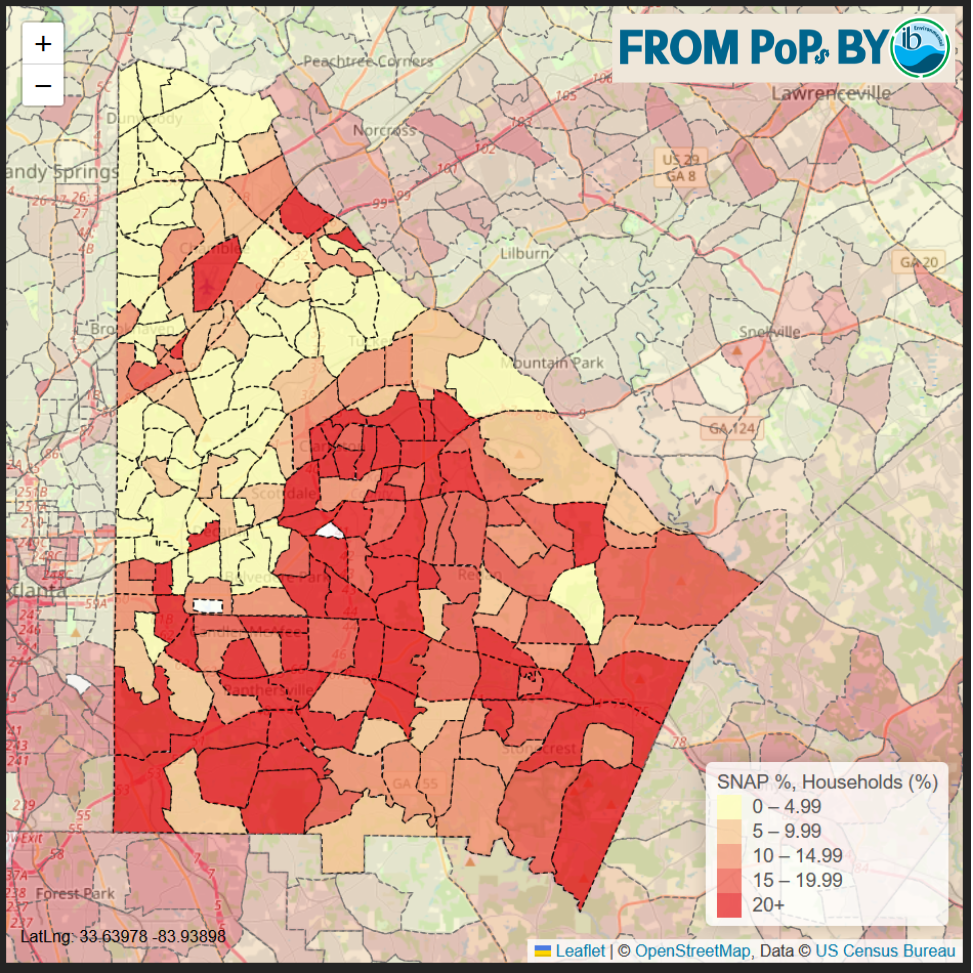Transitioning to Clean Energy – The Beginning of One County’s Journey
By Stacey Isaac Berahzer
Figure 1. Map Showing Monthly Energy Burden for Individual Census Tracts within DeKalb County
Based on a bill of $150 for Electricity and a bill of $80 for Gas (Therefore a Combined Bill of $230) as a Percent of Median Household Income
Moving from less efficient, fossil-fuel based energy to more efficient renewal sources of energy is a goal of many communities. As communities integrate renewables into their long-term planning, we often see target years such as 2030 and 2050 deadlines set to achieve carbon neutrality goals. But, what are the main elements in reaching these goals, and how are the lowest-income “pockets of poverty” within a community affected by these targets?
On Earth Day 2025, DeKalb County’s Board of Commissioners unanimously voted to adopt the “DeKalb County 100% Clean Energy and Transportation Transition Plan.” Achieving this significant milestone started with a request for proposals back in May of 2022. The County selected a team to start working on the plan in 2023. Led by Southface Institute, the team also included IB Environmental, Cherry Street Energy, Clean Cities Georgia, and Energetics.
ibE’s main role centered on developing recommendations to equity and address energy burden within the County. We started with Energy Burden and its Drivers and then highlighted existing programs to assist low-income customers. We also suggested ways that “regular citizens” can have an impact beyond their own household and participate with local governments in decision-making.
Energy Burden in DeKalb County
Starting with existing affordability conditions, we mapped economic indicators and impact across the County. The map on the right depicts the energy burden, or the percent of household income spent on energy. In this case, the assumed monthly energy bill is $150 for electricity and $80 for gas. This combined bill of $230 is compared to the Median Household Income (MHI) for the County. The map highlights the Pockets of Poverty™ (PoPs) as the darkest red areas across the County, indicating to decision-makers where to focus outreach and financial assistance.
While there is no definitive national standard for what constitutes an affordable percent of MHI value for energy use, commonly used thresholds include:
High Burden: 6-10% of Median Household Income spent on energy (indicated as three different shades of orange on the map on the right).
Very High Burden: Greater than 10% of Median Household Income spent on energy (dark red on the map on the right)
Figure 2. 20th Percentile Versus Median Household Income
Measuring Burden
While communities often use “utility bill as a percent of MHI” to assess the overall burden of their energy bills, it is prudent to focus attention and assistance to the low-income customers specifically. Some experts, especially in the water utility field, are recommending using the 20th percentile as the income level on which to calculate affordability. The diagram on the left illustrates this concept.
In this case, the client was the County itself, but in many cases, the entities interested in these sort of “heat maps” are utilities. In such cases, the PoPs™ model analyzes data at the Census Tract level within the custom utility boundaries. This way, we capture a more accurate picture of the population that is really being served. This customized approach ensures all communities within the utility’s reach are included. This gives a more accurate idea of income and other socioeconomic characteristics within the given utility service area. An example of this can be found in our Pockets of Poverty: A Finer Lens on Utility Affordability and Equity blog.
Figure 3. Map Showing Percent of Households Receiving Supplemental Nutrition Assistance Program (SNAP) Benefits
Considering Other Socioeconomic Factors for DeKalb County
Even without considering the energy bills, it is important to have a basic understanding of the economic conditions of the community. For example, how many customers are receiving Social Security Income or how many are unemployed across the County? For the DeKalb Transition Plan, we mapped:
MHI
Total Water Burden
Percent of Households in Poverty
Percent of Households Receiving Supplemental Nutrition Assistance Program (SNAP) benefits (see right)
Looking Ahead: Building on a Strong Foundation
While the title of this post references “The Beginning of One County’s Journey,” DeKalb County’s commitment to sustainability began well before the launch of this Transition Plan in 2022. Over the past two decades, the County has been a leader in the energy space—pioneering landfill gas recovery projects, adopting a Green Fleet Policy that prioritizes fuel-efficient vehicles, and steadily upgrading its outdoor lighting to energy-saving LEDs. A pivotal step in accelerating these efforts was the creation of a Sustainability Coordinator position in 2020, signaling a strategic investment in long-term energy planning. Looking ahead, expanding this capacity—such as establishing a dedicated Sustainability Office within the Chief Operating Officer’s Office—could provide the structure, leadership, and continuity needed to scale impact and turn bold goals into lasting results.
Feedback from Dekalb County:
“IB Environmental played a crucial role in ensuring that the DeKalb County Clean Energy Transportation Plan wasn't just about transitioning to cleaner energy sources, but that it also prioritized equity and affordability,” said Marcus Allen, policy analyst with the DeKalb County Board of Commissioners. “Stacey, her team, and our project partners hosted a series of community workshops throughout 2024 where residents across DeKalb County engaged in sustainability myth-busting, weatherization improvements, energy bill analysis, and regulatory involvement. IB Environmental brought a resident-first perspective to this project, ensuring that the DeKalb County Clean Energy Plan addressed the disproportionate energy burden faced by many residents. The analysis and research from IB Environmental was also key in the development of the soon coming DeKalb County Office of Water Customer Advocacy, designed to assist DeKalb County residents with water billing issues, navigating customer assistance programs, and closing the gap on energy burden across DeKalb.”
Subscribe Here
Sign up with your email address to receive notices of new blog updates. We post about once per month.



